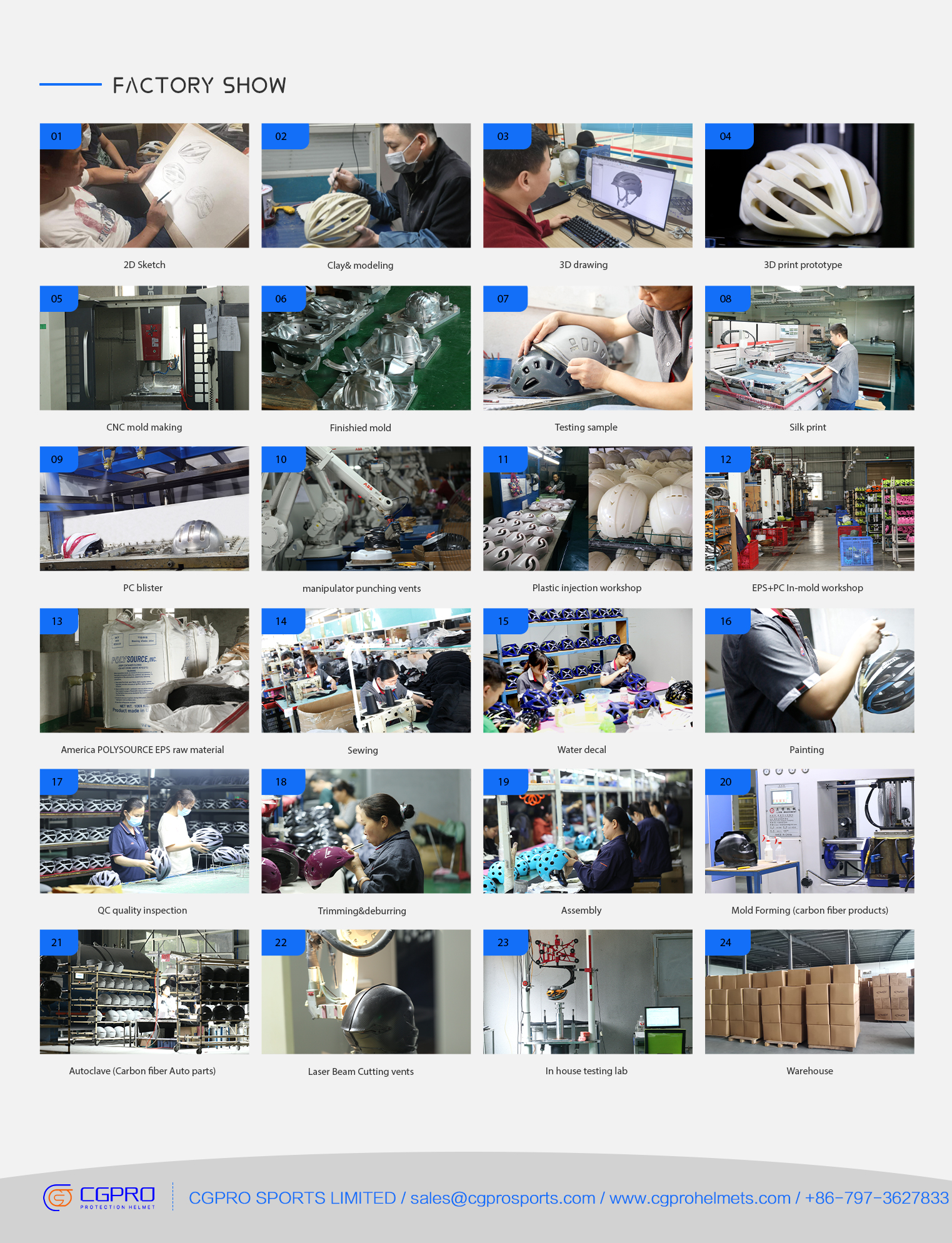
Oct. 18, 2024
Helmets, as vital safety equipment, are widely used in industries, sports, military, and other fields. Their quality and performance are directly related to the life safety of users. From concept design to final quality inspection, the manufacturing process of helmets is complex and meticulous, with every step embodying the wisdom and efforts of engineers and technicians. Today, let's delve into the complete process of helmet manufacturing and appreciate the craftsmanship and technology behind it.
Concept Design: Balancing Safety and Comfort
The initial design of helmets begins with Computer-Aided Design (CAD) software. Designers draw the preliminary shape of the helmet here, considering its form, ventilation system, internal padding, and how to maximize protective performance. At this stage, the design team needs to balance safety and comfort to ensure that the helmet not only protects the head but also provides a good wearing experience for the wearer.
Material Selection: The Balance of Strength and Weight
The core materials of helmets typically include high-strength plastics such as ABS (Acrylonitrile Butadiene Styrene), polycarbonate (PC), and composites like carbon fiber and glass fiber. The choice of these materials is based on their strength, weight, and cost-effectiveness. For example, ABS and PC have high impact absorption capabilities, capable of protecting the head from high-speed impacts; while carbon fiber and glass fiber provide additional strength and toughness, enhancing the helmet's protective performance.
Mold Making: Precision Determines Quality
After confirming the design, engineers begin making molds for production. The precision of the mold directly affects the quality of the final product. Therefore, this is a high-precision process requiring strict control of every detail. Once the mold is completed, multiple trials and adjustments are conducted to ensure it fully meets the design requirements.
Molding Processing: Shaping the Perfect Form
Using molds for mass production is a crucial step in helmet manufacturing. This stage includes injection molding, cooling, and demolding. The raw material is heated and injected into the mold, undergoing certain pressure and temperature treatments to fully fill the mold cavity, forming the helmet's shell. Then, the helmet shell is removed from the mold, cooled, and solidified to maintain a stable shape and structure.
Customization Service: Meeting Individual Needs
Before assembly and lining, a "customization" service is newly added to the helmet manufacturing process. Consumers can personalize their helmets based on individual preferences and needs, selecting the shape, size, color, pattern, and lining material. This service not only meets the diverse needs of the market but also makes the helmet more suitable for the wearer's head shape and needs, enhancing wearing comfort and safety.
Assembly and Lining: Details Determine Success
After customization, the helmet enters the assembly stage, including the installation of lining, buckles, adjustment devices, and other components. The lining, typically made of high-quality materials, can be adjusted according to the wearer's head shape and needs, providing better comfort and protection. Buckles and adjustment devices ensure that users can adjust the size as needed for a secure fit.
Quality Inspection and Testing: Ensuring Safety Without Worries
Every helmet undergoes rigorous quality inspections, including appearance checks, impact resistance tests, comfort tests, heat resistance, and corrosion resistance tests. These tests ensure the helmet's reliability and effectiveness in protecting the wearer's head safety.
Silicone Mold-Making: Innovative Practice in Carbon Fiber Helmet Manufacturing
In the manufacturing of carbon fiber helmets, silicone mold-making technology demonstrates significant innovative potential with its high precision, durability, and reusability. This technology not only improves the helmet's overall performance and safety but also reduces environmental pollution.
Packaging and Distribution: The Last Step in Safeguarding Safety
Helmets that pass inspections are cleaned, packaged, and distributed to retailers or directly sold to consumers. During packaging, helmets are placed in dedicated boxes with appropriate fillers to prevent collisions. At the same time, product labels and instructions are attached to ensure consumers can correctly use and maintain their helmets.
Conclusion: Rigorous and Complex, Just to Safeguard Safety
From concept design to final quality inspection, the manufacturing process of helmets is complex and meticulous. Every step embodies the wisdom and efforts of engineers and technicians, ensuring that every helmet provides maximum safety for users. Choosing a helmet that meets safety standards and wearing it correctly is our responsibility to ourselves and others' life safety. Let's pay attention to the quality and safety of helmets together and escort every trip!
